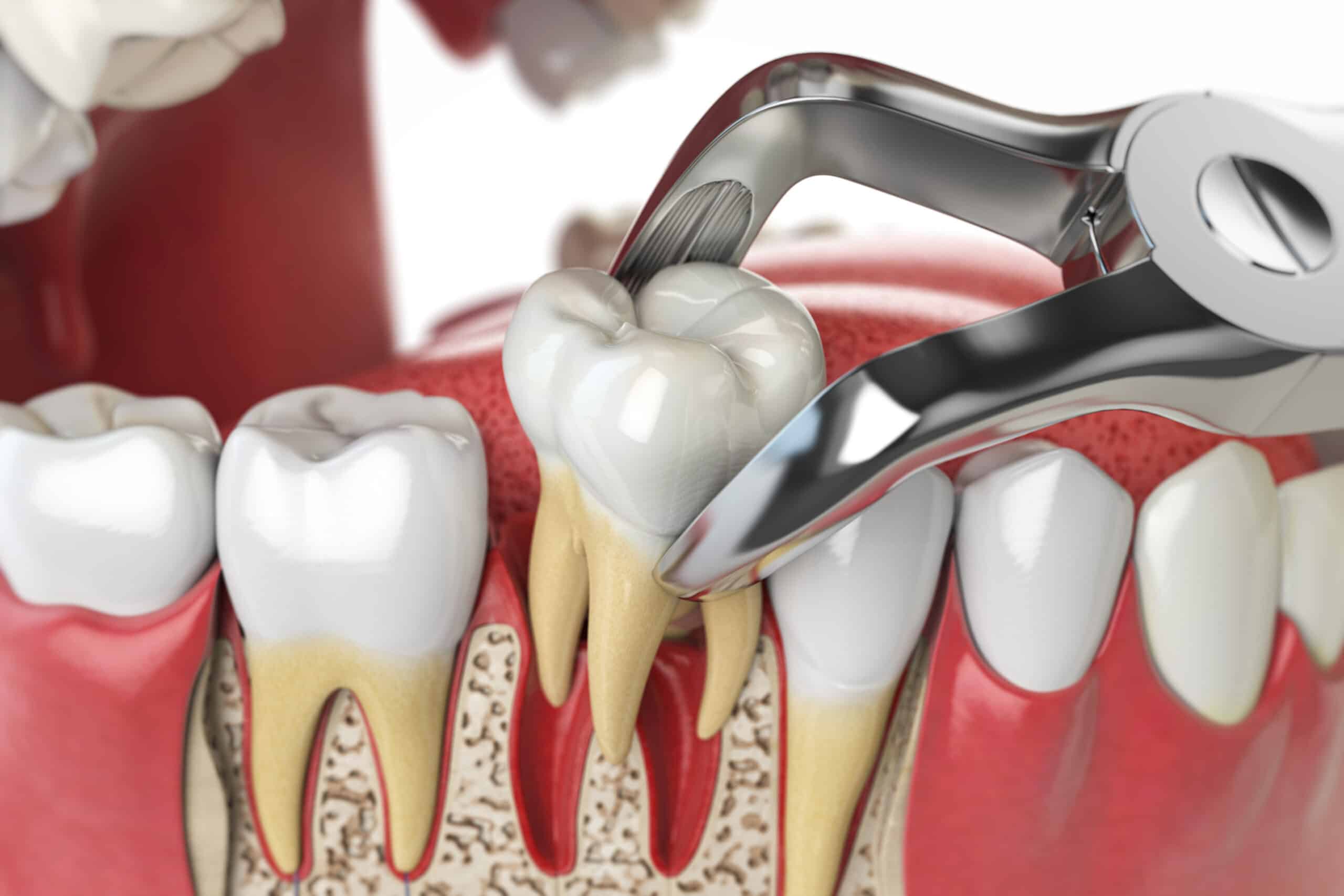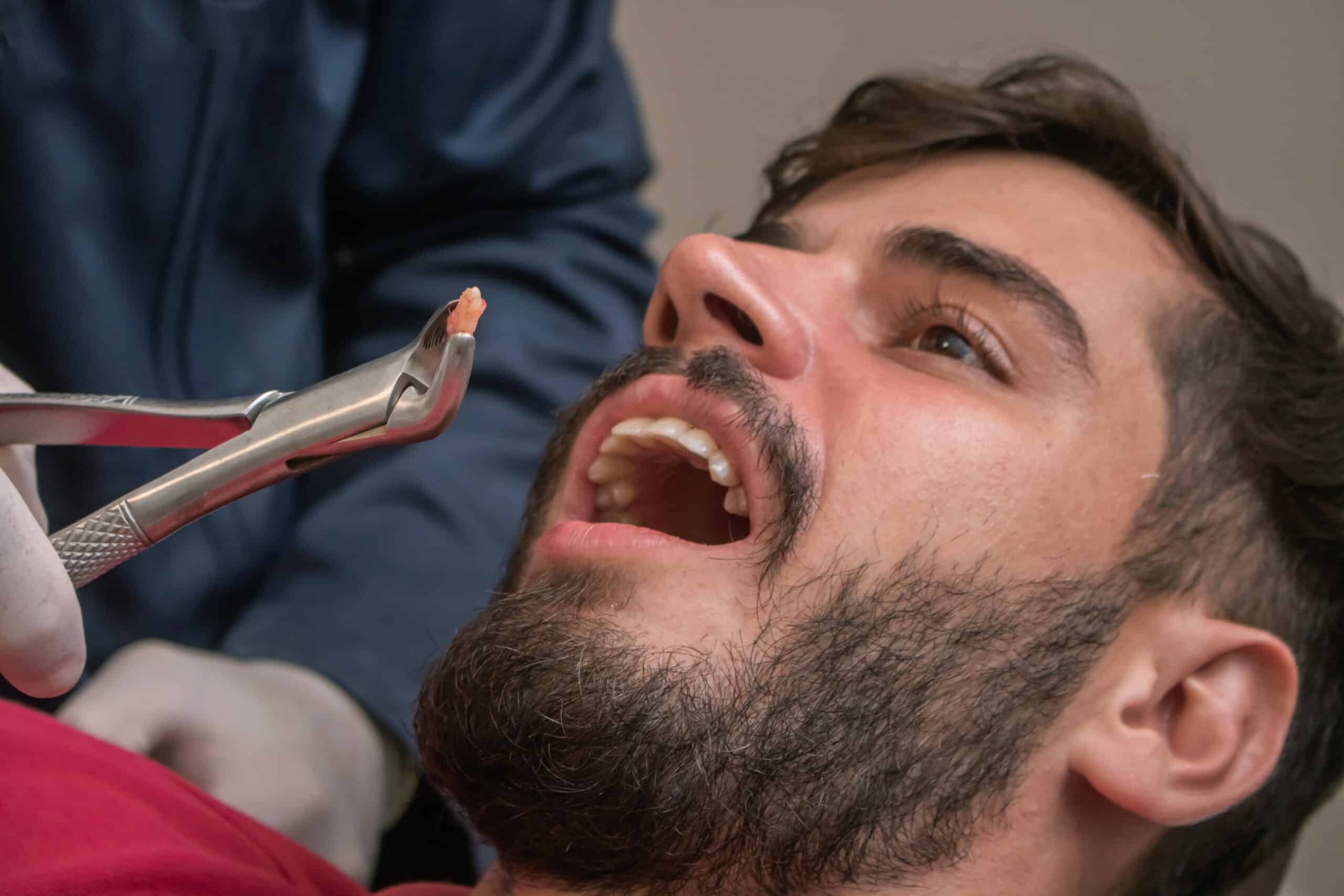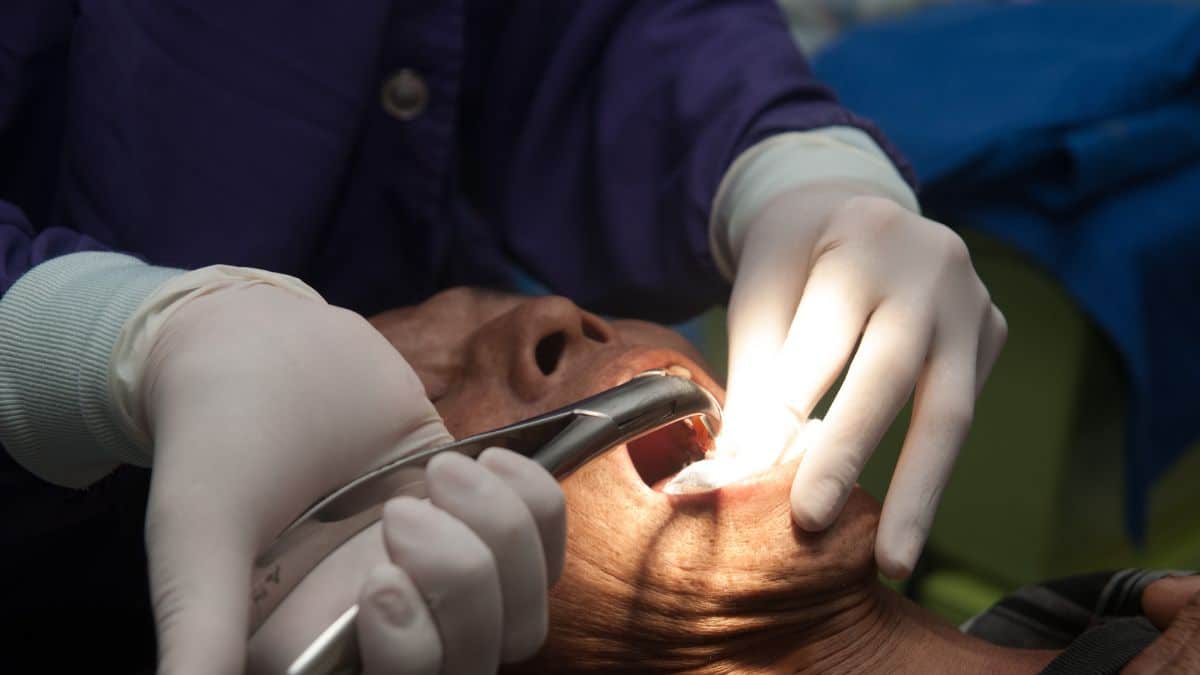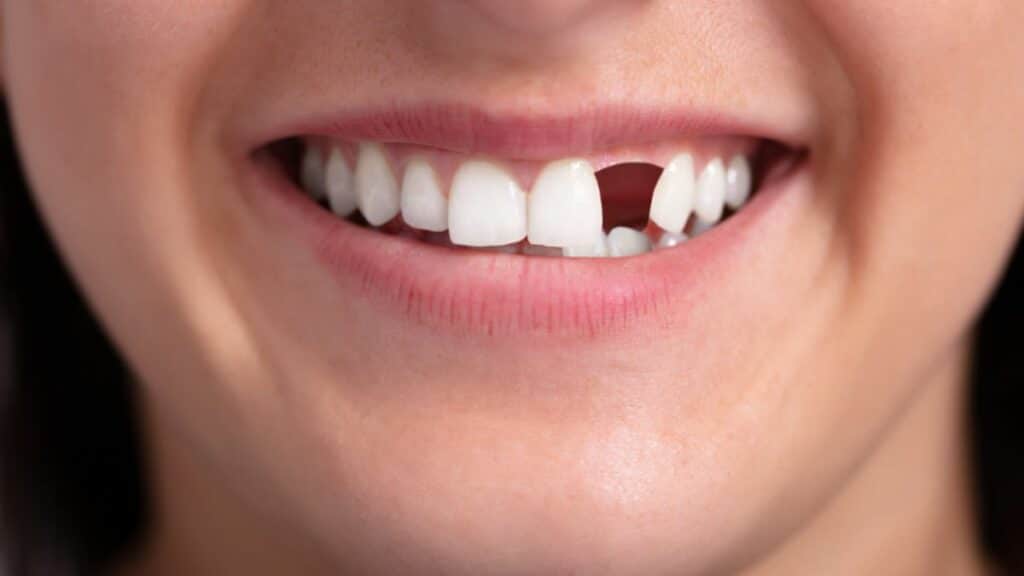Let’s face it, no one enjoys the idea of having a tooth removed. It’s something we often associate with pain and discomfort. But is tooth extraction really as painful as most people fear? Well, I’m here to shed some light on this common dental procedure.
In truth, tooth extraction itself is typically not painful. That might come as a surprise for many! Why? Because you’ll be under local anesthesia during the procedure which numbs your mouth and eliminates pain sensations entirely. So while you may feel pressure or movement, actual pain should not be part of your experience.
However, what can cause discomfort is the recovery period following the extraction when anesthesia wears off. The level of post-procedure soreness varies depending on individual factors such as personal tolerance levels and complexity of extraction process but it’s usually manageable with over-the-counter medication prescribed by your dentist.
So in conclusion: Is removing teeth painful? During the actual procedure – No; during recovery – potentially yes but usually manageable.
Understanding the Process of Teeth Removal

Let’s dive right into what you can expect when it comes to teeth removal. It’s not uncommon to feel a little nervous, but knowledge is power and understanding the process can help alleviate some of those jitters.
First off, it’s crucial to remember that tooth extraction isn’t usually painful. Thanks to modern anesthesia techniques, pain during the procedure is typically minimal or nonexistent. Your dentist or oral surgeon will use either local, general or intravenous sedation (or a combination) depending on your comfort level and the complexity of your case.
Before starting with an extraction procedure:
- An X-ray is taken for detailed view.
- A medical history check ensures no complications during surgery.
- You’ll be administered anesthesia for numbing purposes.
Next up in our journey through teeth removal – The actual extraction! This process varies based on whether your tooth is visible or impacted:
- Simple Extraction: If your tooth is visible above gum line, dentists use an instrument called elevator to loosen it and forceps for removal.
- Surgical Extraction: For broken at gum line or hasn’t yet come in (impacted), small incisions are made into gums followed by removing bone around tooth if required before taking out the problematic chomper.
Post-procedure instructions from your dentist are essential for smooth recovery and healing:
- Ice packs application controls swelling
- Painkillers prescribed control discomfort
- Avoid smoking & hard foods initially
So while I won’t sugarcoat it – yes there might be mild discomfort post-surgery; rest assured knowing that millions go through this every year without major issues speaks volumes about its safety profile!
Bear in mind though – while Google may have brought you here; nothing beats professional advice so ensure consultation with healthcare provider as need arises!
Types of Teeth Extractions: Simple and Surgical
Let’s dive right into the two primary types of teeth extractions: simple and surgical. I’m here to break down these procedures for you, so that if you’re faced with one, you’ll know what to expect.
A simple extraction is just as it sounds – straightforward and uncomplicated. Dentists usually perform this procedure on a tooth that’s visible in the mouth. Here are some key steps:
- The dentist uses an instrument called an elevator to loosen your tooth.
- Once loosened, they use forceps to remove it.
Simple extractions generally cause minimal discomfort during recovery. But don’t fret! Over-the-counter painkillers can typically manage any soreness or throbbing.
On the other hand, we have surgical extractions which are more complex procedures. They’re often necessary when a tooth hasn’t fully erupted from the gums or has broken off at gum level (like wisdom teeth sometimes do). Here’s what happens during a surgical extraction:
- Your oral surgeon will make an incision in your gum.
- If needed, they may also remove bone around your tooth or cut your tooth before it can be extracted.
I should mention though; this type of procedure tends to have longer recovery times due to its complexity compared with simple extractions. You might experience swelling after surgery but using ice packs can help reduce this effect.
In both cases – whether simple or surgical – dentists aim for maximum patient comfort by using local anesthesia (and sometimes sedation) so that patients feel no pain during extraction itself – only pressure!
Remember folks! It’s important not just knowing about these procedures but also ensuring good oral hygiene pre-and post-extraction for smooth healing process without complications like infections setting in!
Factors Influencing Pain During Tooth Extraction

Is tooth extraction painful? It’s a common question that I often hear. Truth be told, the answer is not as simple as a yes or no. Several factors come into play when it comes to determining the level of discomfort or pain you might experience during a tooth extraction.
First and foremost, your individual pain threshold plays a significant role in how much discomfort you’ll feel during any dental procedure, including extractions. Some people have higher tolerance levels for pain than others. If you’re someone who typically experiences high levels of sensitivity during dental procedures, then there’s likelihood that an extraction could cause some discomfort.
Secondly, let’s talk about the type of tooth being removed – this can also influence the amount of potential pain experienced. Wisdom teeth removals are often considered more painful due to their location and possible impaction within the jawbone – making them trickier to remove compared with other teeth.
The third factor worth noting is your dentist’s technique and skill level – if they’re experienced and adept at performing extractions then it’s likely that any potential distress will be minimized.
Additionally, anxiety can play an influential role in perceived pain too! The fear associated with dental procedures may amplify feelings of unease and make us perceive greater amounts of suffering than we’re actually experiencing!
Lastly but certainly not least important; anesthesia used by your dentist can significantly impact sensations felt throughout treatment. Most dentists use local anesthesia which numbs only specific areas where surgery will occur – reducing both physical sensations & psychological anticipation linked to operative processes.
So while it might seem like getting teeth pulled would automatically entail lotsa’ hurtin’, remember these factors all contribute towards shaping each person’s unique experience.
Anesthesia Options for a Painless Dental Procedure
One of the first things I’d like to assure you about tooth extraction is that it’s not as painful as most people fear. The pain, or rather discomfort, usually comes post-procedure when the anesthesia wears off. But let me tell you more about how dentists ensure a virtually painless process during the actual extraction.
Local anesthesia is typically the go-to option for most dental procedures including tooth extractions. Lidocaine is commonly used and it numbs only the specific area where treatment will be done. It’s injected directly into your gum and you’ll feel numbness soon after administration.
If we’re talking about multiple extractions or an impacted wisdom tooth surgery, then general anesthesia might be administered instead of local. This puts patients in an unconscious state throughout their procedure—there’s no feeling any discomfort at all! With this type of sedation though, someone will need to accompany you home since it takes time before its effects completely wear off.
There are also non-injectable options such as Nitrous Oxide (N2O), popularly known as laughing gas. This doesn’t put patients to sleep but creates a relaxed state while still being fully awake during treatment – kind of like floating on clouds!
And finally, there’s oral conscious sedation which involves taking prescribed medication prior to your appointment that helps ease anxiety and create relaxation without complete loss of consciousness.
Remember though: what works best can vary from person to person based on factors like overall health condition or level of anxiety towards dental treatments – so always consult with your dentist first!
Post-Extraction Symptoms: What to Expect After Surgery?

When you’re prepping for a tooth extraction, it’s normal to feel a bit anxious about the whole process. And let’s face it, most of us are also worried about what happens after the procedure. So let me ease your fears and explain what you can expect in terms of post-extraction symptoms.
First things first, discomfort is expected. Now don’t panic! The degree of pain varies from person to person and depends on factors like your individual pain threshold and the complexity of your extraction. Some folks might experience mild tenderness while others may feel more intense pain.
Swelling is another common symptom that crops up following surgery. Your cheeks or jaw may puff up as your body responds to trauma by sending extra blood cells into action mode! You’ll probably notice this swelling peak around 48 hours after surgery before gradually subsiding over the next few days.
You might also observe some bruising in the area where teeth were removed – kind of like when you accidentally bang your shin against something hard (ouch!). This discoloration tends to appear a couple days post-surgery and fades away within approximately one week.
Here’s a quick summary:
- Discomfort varying from mild tenderness to more intense pain
- Swelling peaking around 48 hours after surgery
- Bruising appearing few days post-surgery
Finally, if there was an infection present prior to extraction or if bacteria manage their way into the socket during recovery (sneaky little buggers!), there could be signs such as persistent severe pain, bad breath or taste in mouth indicating infection – called dry socket.
Remember everyone heals at different rates so these timelines aren’t set in stone but they provide an idea on what generally happens after teeth removal.
How to Manage Discomfort Following Tooth Removal
I won’t sugarcoat it; tooth extraction can sometimes result in a fair bit of discomfort. But don’t let that deter you, there are several ways to manage this and ensure your recovery is as smooth as possible.
First up, let’s talk painkillers. Over-the-counter drugs like ibuprofen or acetaminophen are typically recommended post-extraction. They’re effective at reducing both pain and inflammation, making them a great first line of defense against discomfort. Always remember to stick within the recommended dosage limits though!
Next on the list is ice packs – these should be your best friend after having a tooth pulled! Apply an ice pack externally on the affected area for 15 minutes at a time with breaks in between can significantly reduce swelling and numb any lingering soreness.
Then there’s salt water rinses – an oldie but goodie when it comes down to oral care routines post-extraction. Mix half teaspoon of salt into 8 ounces warm water (it shouldn’t feel hot). Swish this around gently in your mouth before spitting out – repeat this every two hours or so during waking hours for about one week after surgery.
Rest is also crucial for speedy recovery from any surgical procedure including tooth removals! It’s advised not only because rest promotes healing but also due its role in preventing complications such as dry socket which could worsen pain levels significantly if they occur.
Last but not least: avoid smoking and alcohol consumption following surgery since both can interfere with wound healing process thereby potentially causing more discomfort than necessary during recovery period!
Remember that these methods aren’t guaranteed quick fixes – everyone heals differently after all – yet most people find some combination helps ease their transition back into normal life post-tooth extraction considerably.
Myths and Misconceptions About Teeth Extraction Pain

I’ve often heard folks saying, “Having a tooth pulled out is the worst pain imaginable.” It’s one of those myths that has somehow stuck around. The truth? Modern dentistry has come a long way, and today’s techniques are designed to minimize discomfort.
For starters, let’s debunk the myth that extraction is excruciatingly painful. Yes, there can be discomfort involved in tooth extraction procedures but calling it ‘excruciating’ might be an exaggeration for most people. Dentists use local anesthesia during the procedure which numbs your mouth area making you feel little to no pain at all during the process.
Then there’s this misconception: “The more teeth you extract, the more painful it gets”. While multiple extractions may require additional recovery time due to swelling or bruising in some cases – it doesn’t necessarily mean amplified agony. Each person experiences post-extraction symptoms differently based on several factors such as overall health condition or tolerance level towards pain.
Another common fallacy I’ve encountered goes something like this: “Baby teeth extractions don’t hurt.” This isn’t entirely accurate either! While extracting baby teeth might generally cause less discomfort than adult ones (since they have shorter roots), children could still experience some degree of soreness after their procedure.
Finally comes my favorite myth: “You’ll definitely need strong prescription drugs after getting your tooth extracted.” Although dental professionals prescribe medications for managing post-extraction discomfort if needed – many patients find over-the-counter options sufficient enough too!
Let me remind you again that these are just misconceptions floating around about dental extraction procedures causing immense distress. Everyone’s experience with tooth removal varies greatly depending upon various elements like their individual threshold towards bearing physical unease or even how well they follow pre and post-operative care instructions provided by their dentist!
Conclusion: Overcoming Fear of Dental Procedures
Let’s wrap this up. I’ve discussed the potential pain associated with tooth extraction, but it’s crucial to remember that fear shouldn’t hold you back from maintaining good oral health.
First off, dentists today have an arsenal of techniques and medications at their disposal to minimize any discomfort during procedures. With local anesthesia and sedation options, most patients report feeling pressure rather than actual pain during extraction.
Remember these key points:
- Always discuss your fears with your dentist or oral surgeon. They’re trained professionals who can help address your concerns.
- Understand the procedure fully before going in for it.
- Explore different relaxation techniques such as deep breathing exercises or distraction methods like listening to music.
Now let’s talk about what I believe is a silver lining here – modern dental technology! It’s rapidly advancing and making procedures more comfortable than ever before. From laser treatments for gum disease to computer-guided implant surgery, dentistry has come a long way since its early days.
I hope by now you understand that while some discomfort may be expected when removing teeth, severe pain isn’t necessarily part of the package deal!
In short: yes, there might be some apprehension surrounding dental visits – particularly if they involve extractions – but don’t let this stop you from getting necessary treatment. You’re not alone in this journey; there are plenty of resources available to help manage anxiety around dental procedures.
Remember that overcoming fear takes time and patience so cut yourself some slack too! There’s no need for unnecessary stress on top of dealing with toothaches or decay problems. So take charge today – discuss any worries openly with your dentist because at the end of day we all want one thing – healthy smiles all round!


